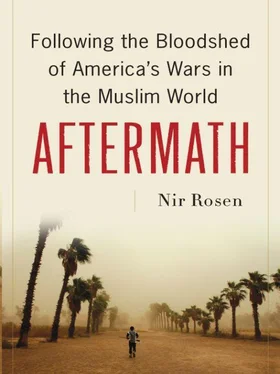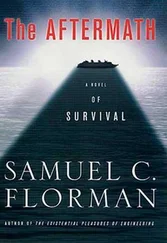Multi-National Forces-Iraq—headed by General Casey at the beginning of the surge, then by General Petraeus, and then by Gen. Raymond Odierno—was the overall strategic headquarters for U.S. coalition forces. Multi-National Corps-Iraq (MNC-I), the tactical unit responsible for command and control of operations in Iraq, was supposed to coordinate the actions of its subordinate divisions: Multi-National Division-Baghdad and Multi-National Division-Center, which was responsible for area south of Baghdad.
Lieut. Col. Steve Miska, who served as a deputy brigade commander throughout Baghdad during the surge, told me that the additional soldiers provided a greater density of troops for more effective partnership with the Iraqi Security Forces. But another factor was important. In Baghdad, before the surge, none of the boundaries separating American forces matched those used by Iraqi forces, and none of those boundaries matched the political lines of baladiyas (local municipalities). As a result it was difficult to synchronize with local politicians or security forces, and there was little American integration or coordination with the ISF. The surge realigned the military boundaries with the political boundaries. “That allowed for sustained relationships between the Iraqi army, coalition forces, and political leaders,” Miska explained. “It restored confidence among the populace in many cases. The overall surge strategy realigned the Iraqi army boundaries to match the district boundaries in Baghdad. We did the same for the U.S. boundaries. The effect was that now the same U.S. and Iraqi commanders would work with the same local politicians to resolve issues.”
The lines for the ten Baghdad “security districts” were drawn on a map by Lieut. Col. Douglas Ollivant, chief of plans for MND-B, and Major General Ali of the Iraqi Ministry defense staff, who had studied at Sandhurst (in 1971), the Indian Staff College, and the NATO staff college in Italy, and who spoke English well. Each of the districts would be under the authority of an Iraqi army or Iraqi National Police headquarters. This was a key meeting, where strategic boundaries were being drawn, and yet nobody from Corps, as Odierno’s staff was called, was present except for a very junior major who was there only as a note-taker. The surge plan was drawn up by Brigadier General Campbell, Colonel Toby Green, and Lieutenant Colonel Ollivant with little guidance from Multi-National Corps-Iraq. General Casey was present, however, giving very specific guidance. It was Casey who suggested creating joint security stations in Baghdad.
In addition to the role played by McGurk and O’Sullivan, two outsiders played a crucial role in the push for more troops. Fred Kagan and Gen. Jack Keane are controversial figures: the former is a neoconservative military historian with no experience or specialization in the Middle East; the latter an imposing and intimidating retired general with a forceful personality. But they were effective because they provided a public voice arguing that a troop surge could work. While working on this book I met American officials who loved them or hated them, who attributed the whole surge to them or denied they had any significant role. “Success has many fathers,” one lieutenant colonel explained, and the surge was the only positive development anyone could point to in America’s catastrophic occupation of Iraq.
In 2006 there were many voices calling for either an American withdrawal or an increase in American troops. Colin Kahl of Georgetown University and then the Center for New American Security visited Iraq in the summer of that year. Based on his experience he called for more troops or for a withdrawal, but he was ignored as an outsider and a Democratic partisan. (President Obama would later install him as Deputy Assistant Secretary of Defense for the Middle East.) There was a joint push for more troops coming from the NSC and the Keane/Kagan duo. Keane, who looked at Iraq from a purely military view, was the most consistent and longstanding advocate of a troop increase. “He was always poking,” one NSC member told me. J.D. Crouch, the deputy national security adviser, hosted an Iraq review in December 2006. He convened small groups in which he appeared neutral, but he steered skeptics to the surge—and then convinced his boss, Stephen Hadley. One lieutenant colonel involved in the surge described Kagan as “just a blowhard who could be counted on to give the party line in print when he returned from each of his Petraeus-sponsored trips.” But another lieutenant colonel described him as a brilliant and rigorous thinker. “Kagan is the main guy behind the push for more troops, and Keane is an idiot,” he told me, adding, for good measure, that Casey and Fil were also idiots. Although neoconservatives have traditionally been advocates of increased reliance on airpower, Kagan broke with this neoconservative predilection for “shock and awe” tactics. Instead he believed that war was about influencing people on the ground, and thus required more troops. Kagan provided Bush with an alternative to the Senate’s Iraq Study Group report, which advocated a reduction in troops.
An internal NSC review and Keane’s force of will persuaded the president to change course in Iraq. The push out of Washington for more troops was then utilized by Multi-National Division-Baghdad, with some oversight from General Casey, to secure Baghdad. General Odierno had a very different concept, his critics told me. “He wanted to use the troops out in the ‘Baghdad belts’ to go kill Sunnis,” one senior American officer said. Odierno’s role was “totally blown out of proportion,” according to one of the architects of the surge in Baghdad, “and I don’t think he really figures in the picture.” Major Morgado strongly disagrees: “Though Baghdad was a large problem set, it was not the only problem set,” he said.
There was a serious and heated internal debate among the Americans in Baghdad, both between different headquarters and within them, over whether they should focus on population security or continue to capture and kill. Advocates of the latter approach, of which Odierno apparently was the champion, saw which way the wind was blowing, aped the new COIN language, and called their method “clearing,” as in “clear, hold, and build” or “clear, control, and retain.”
But Morgado disagreed with this description of Odierno’s philosophy. “Maliki wanted to go and kill Sunnis,” he told me. “By putting a larger American presence in the belts, it stopped Maliki from pursuing this aim, and it allowed Americans to effectively interdict lines of communication and thereby stop accelerants of the violence. The Awakening would have been hard-pressed to happen if Maliki was allowed to unleash a one-sided assault on the Sunnis in the belts.”
General Petraeus and the bulk of MND-B were focused on providing security to the Iraqi population. Odierno and some other elements—most notably the Third Stryker Brigade combat team, Second Infantry Division, under the command of Steve Townsend—wanted to keep “clearing,” the most violent part of the “clear, hold, and build” process. Odierno tasked the Third Infantry Division to lead the organization of Multi-National Division-Central and facilitate the fight in the belts outside Baghdad. As airpower advocates have noted, more bombs were dropped in 2007 in MND-C’s area of operations than at any time earlier in the war. While Baghdad was focused on population security (despite some internal dissidents and occasional lapses), MND-C was still killing and capturing until much later, when the Awakening groups were established there too.
Odierno wanted to reduce the influence of MND-B (the major institutional proponent of executing the surge) and transfer terrain to the other units that shared his focus on killing and capturing. Odierno could never directly say, “Don’t secure the population,” since Petraeus would overturn that, but he could nibble away at MND-B’s influence. (Morgado denied that his old boss had any obsession with killing. “I believe General Odierno sensed weakness in General Fil,” he said. “Odierno used to talk about reconciling with various parties back in 2003 to 2004. This was not a new concept for him.”)
Читать дальше











